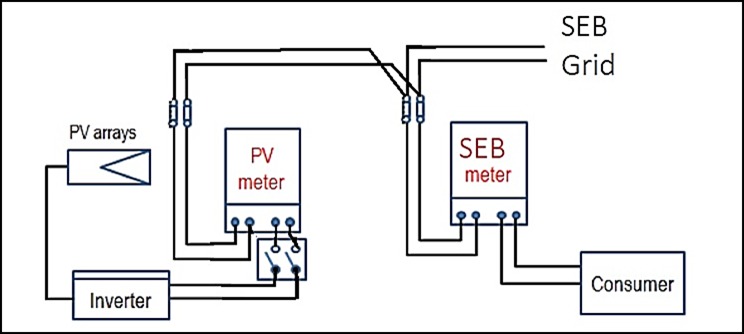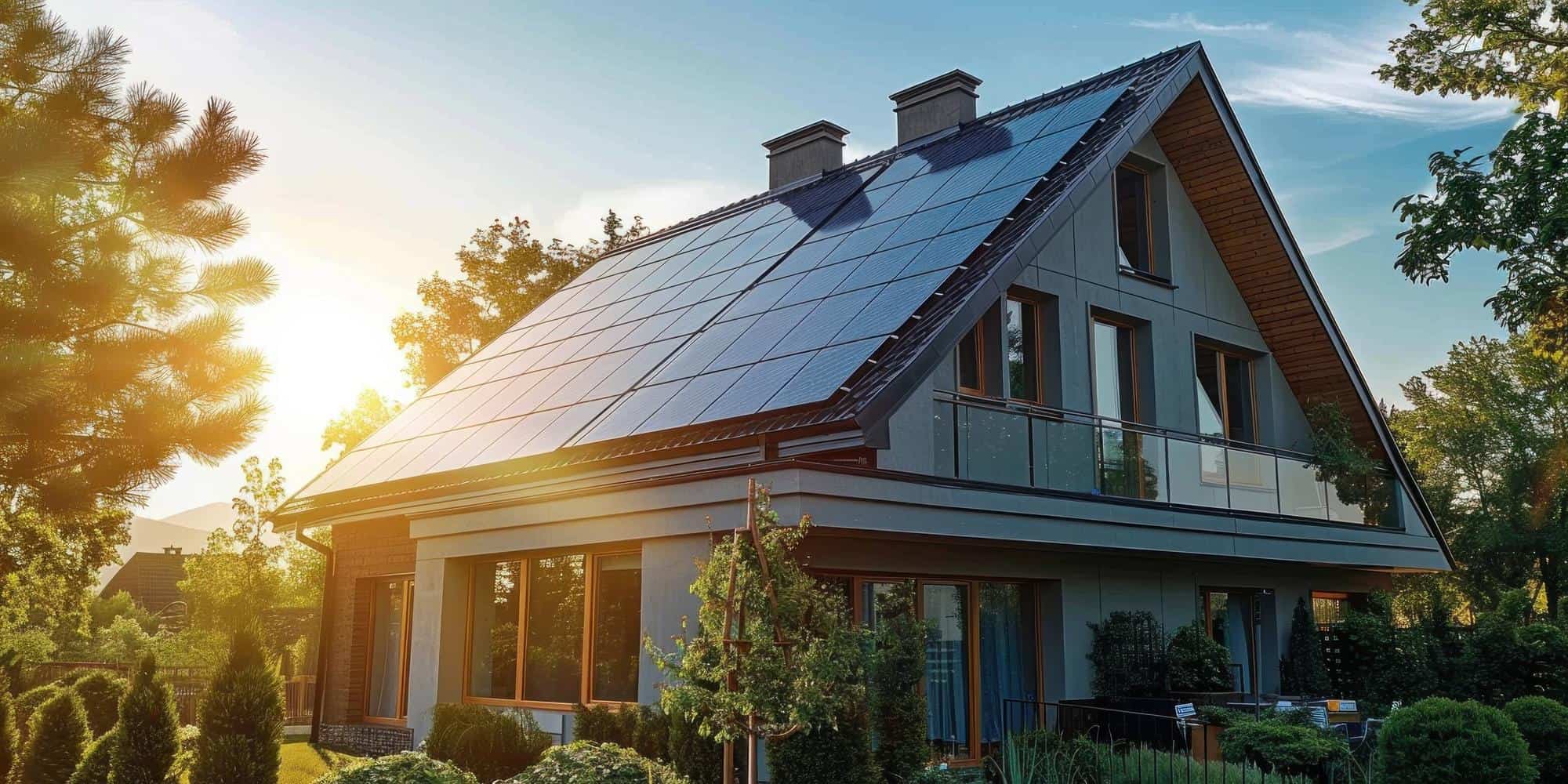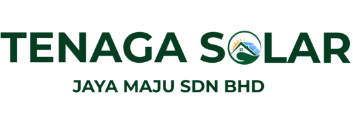Getting Started with Solar in Sarawak
NET ENERGY METERING SCHEME
Tenaga Solar Jaya Borneo, now expanding to Kuching, proudly supports Sarawak Energy’s Net Energy Metering (NEM) initiative. As a trusted solar solutions provider with years of experience across Malaysia, including Kuala Lumpur and Johor, we offer expert, certified services to homeowners in Sarawak.
Through the NEM program, homeowners can generate their own clean energy using Solar PV systems and receive credits for surplus electricity exported back to the grid. Tenaga Solar Jaya Borneo (Sarawak Branch) aligns with Sarawak Energy’s NEM initiative, promoting renewable solar adoption in Sarawak and helping customers benefit from the NEM subsidy while contributing to the state’s renewable energy goals.
Below are the official details and guidelines of the NEM Scheme as announced by Sarawak Energy.

Sarawak's Solar Energy Program
Net Energy Metering (NEM) Scheme Overview
The Net Energy Metering (NEM) scheme is a billing system designed to provide credits to owners of Solar Photovoltaic (PV) systems for the electricity they feed back into the grid. For instance, a residential household with a rooftop PV system may produce more electricity than it consumes during daylight hours. The implementation of the NEM scheme in Sarawak aims to encourage the adoption of renewable energy and support the conservation of non-renewable energy resources at the consumer level.
NEM Scheme: Requirements and Guidelines
- 12kWp for Single Phase
- 20kWp for 3 Phase
- Subject to quota availability (Not more than 75% of the total maximum transformer loading in the area from 11hrs to 1500hrs in the past 6 months
- Applicants shall install the solar PV system with the capacity that generates energy not exceeding 75% of the average consumption for the past 12 months.
- For system more than the specified capacities, the applicant shall seek approval from the Director of Electricity Supply, Sarawak.
- PV modules can only be installed at the following locations:
- On the rooftop of building, and
- On the garage, car park, and similar structures
For types of installation other than mentioned, the applicant shall seek approval from the Director of Electricity Supply, Sarawak.
PV Systems shall be connected to Sarawak Energy Distribution Network in accordance with the following requirements:
- Voltage:
- Single Phase 240V (+5% and -10%)
- 3 Phase 415V (+5% -10%))
- Voltage Fluctuation: The maximum voltage fluctuation range allowed due to varying solar radiation is 6%. Beyond this, the utility and consumer equipment will be at risk of overheating.
- Power Factor: PV Systems shall have a leading or lagging power factor greater than 0.9 and 0.85 respectively when the output is greater than 20% of the rated output power.
Multiple installations of PV in a same LV network will increase the current injection to the respective network. Undesirable overvoltage in the LV networks might occur if the magnitude of PV current injection is greater than the load of the LV networks.
Recommendation for PV penetration limits are as follows:
- Maximum allowable Solar PV capacity connected to a single LV feeder is 25kW. This is to ensure that, under worst case scenario without load, the voltage limit of 240V (+5% and -10%) will not be violated.
- Maximum allowable solar capacity connected to LV feeder pillars is 75% of the local transformer loading.
- The Interconnection to Sarawak Energy Distribution Grid System shall be done through Direct Connection. Figure 1 shows the diagram of direct connection between the Prosumer’s Solar PV system and the Grid System.
- The Connection shall be made in accordance with MS IEC 1837 and its updated versions.

Figure 1: The Direct Feed NEM Approach
- A meter shall be installed to measure the energy export of the PV system to Sarawak Energy system. This shall be achieved via a dedicated energy meter (PV Meter) installed at the output of the PV system.
- PV Meter shall be installed as near as possible to Sarawak Energy Meter with maximum distance of 1 meter apart and properly labelled as “PV METER”.
- PV Meter connection to the Grid System shall be done via the existing meter cut-out and neutral link. This point shall be identified as the Common Connection Point (CCP).
- The customer shall be responsible for any installations after the meter.
- The Contractor shall provide and install all the materials required for the system interconnection works.
- All live connection and meter installation works shall be carried out by the authorised Sarawak Energy personnel only.
- For looping connection between cut-outs, 16mm2 Cu or 25mm2 Al cable should be used if the meter is installed in separate cabinets (with maximum distance of 1 meter).
- Single phase smart meter shall be installed for application up to 12kWp
- 3-phase smart meter shall be installed for application more than 12kWp but less than or equal to 20kWp
- Existing Sarawak Energy normal meter shall be replaced by the smart meter
- The connection of PV Meter is shown in Figure 2.

Figure 2: Connection Diagram for PV Meter and the Consumption (Sarawak Energy) Meter
NEM Contractors are responsible for carrying out necessary due diligence on the connection point to facilitate connection of generated energy. All component and equipment that are to be used and installed for the NEM scheme must comply with the latest specification approved for use in the system according to the latest version of MS1837: Installation of grid-connected photovoltaic (PV) system (refer Normative Technical Reference List).
- Forms:
- PVGIA Form = PV generation interconnection application
- AC01 Form = PV Meter application
- Supporting Documents:
- PV Panel Specification
- Inverter Specification
- Auxiliary Specification (Isolator, Breaker, SPD, etc.)
- Solar Schematic Drawing with Interconnection Point (Certified by SEDA GCPV Designer)
- Overall Layout and Location Plan
- Work Schedule
- Estimated Monthly Energy Generation
- Copy of Chargeman L4 Certificate
- Copy of SEDA GCPV Designer Certificate

Testing & Commissioning (T&C) shall be performed by the appointed Contractor. T&C Report shall be submitted to Sarawak Energy Customer Service Counter for the issuance of NEM Contract, and PV Meter Fee.
Contract for Supply of Electricity (for Solar Photovoltaic Installation Under Net Energy Metering Scheme) shall be issued to and signed by the applicant prior to PV Meter Installation and system commissioning. Refer to 3.2 of MOU Guidelines.
All PV metering cost shall be borne by the NEM Customer. The unit price of smart meters for NEM are as follows:
- Single phase smart meter: RM 500
- Three phase smart meter: RM 1000
All other connection charges shall be borne by the NEM customer.
All NEM applications shall be submitted by the appointed Sarawak Energy Registered Contractor (Contractor) on behalf of their client. The Contractor shall engage the following competent persons for the design, installation, and testing & commissioning of the PV system:
- Internal Wiring – Certified Wiremen EIU
- PV Designer – Certified GCPV Designer by SEDA
- PV Installer – Certified GCPV Installer by SEDA, EIU L4
All PV Meter installations shall be performed by Sarawak Energy Retail Department.
Subject to current Sarawak Energy requirement, a NEMAS Study may be requested for the cumulative NEM Solar PV installations undertaken simultaneously in an area, e.g. large housing estate with all solar rooftops. This study is to assess the potential impact of the Solar System on the planning and operation of the Grid system. NEMAS Study shall be performed by the Customer’s appointed Contractor and submit to Sarawak Energy.
NEM adopts Direct Feed approach. Therefore, proper isolation of customers’ PV Systems from Sarawak Energy Grid System shall be carried out to ensure safety during the Grid shutdown for repair and maintenance works. All GCPV related switching practices and caution notice standards shall comply with Sarawak Energy Distribution Operating Practices Manual, Section 9: Grid-Connected Photovoltaic (PV) Switching Coordination Operating Practices and its prevailing versions.
Visible Caution Notices shall be affixed at the following locations:
- Pillar Door
- Pillar way
- Disconnector Switch – Meter Cutout fuse
The following normative technical references are indispensable for the application of this guidelines. For dated references, only the edition cited applies. For undated references, the latest edition of the normative reference (including any amendments) applies.
- Sarawak Energy Distribution Operating Practices Manual, Section 9: Grid-Connected Photovoltaic (PV) Switching Coordination Operating Practices,
- MS 1837:2018, Installation of grid-connected photovoltaic (PV) system (Second revision),
- MS IEC 61643-1, Low-Voltage surge protective devices – Part 1: Surge protective devices connected to low-voltage power distribution systems – Requirements and tests,
- MS IEC 61727, Photovoltaic (PV) Systems – Characteristics of the utility interface,
- MS IEC 62109-1, Safety of power converters for use in photovoltaic power systems – Part 1: General requirements,
- MS IEC 62446, Grid connected photovoltaic systems – Minimum requirements for system documentation, commissioning tests and inspection,
- IEC 61701, Salt mist corrosion testing of photovoltaic (PV) modules,
- IEC 62109-2, Safety of power converters for use in photovoltaic power systems – Part 2: Particular requirements for inverters,
- IEC 62116, Utility0interconnected photovoltaic inverters – Test procedure of islanding prevention measures,
- IEC 62716, Photovoltaic (PV) modules – Ammonia corrosion testing,
- AS/NZS 5033, Installation and safety requirements for photovoltaic (PV) arrays
Announcements
Net Energy Metering (NEM) Subsidy
Announced by Sarawak Energy for Home Users
RM 12,000 Subsidy
Limited Quota
Key Parameters
System Capacity & Subsidy Amount
2kWac to 3.5kWac
Above 3.5kWac to 6kWac
Above 6kWac to 50kWac
KEY FACTS
What Are the Requirements?

Step-by-Step
How to Apply?
Step 1
Step 2
Step 3
Step 4
Step 5
Details
Sarawak Energy Launches NEM Subsidy to Boost Rooftop Solar Adoption in Sarawak and Kuching Homes
In support of Sarawak’s renewable energy goals, Sarawak Energy is launching a Net Energy Metering (NEM) subsidy scheme for Domestic Tariff customers. This program aims to make residential solar installations across Kuching and Sarawak more affordable by reducing upfront costs, encouraging long-term savings, and promoting environmental sustainability.
Under the NEM program, homeowners can install Solar Photovoltaic (PV) systems to generate their own electricity and export surplus power back to the grid. The exported energy is credited against their monthly bills, lowering electricity costs while contributing to Malaysia’s broader carbon reduction efforts.
This initiative aligns with the Sarawak Government’s Energy Transition Policy (SET-P), which promotes renewable energy adoption and supports sustainable economic growth through decarbonization.
Solar Subsidy Amounts for Domestic Customers
The Sarawak Energy solar subsidy is available to eligible homeowners on a first-come, first-served basis, based on system size:
To qualify, installations must be completed by certified Solar PV Designers registered with the Electrical Inspectorate Unit (EIU) under the Ministry of Utility and Telecommunication Sarawak. Applications must be submitted via Sarawak Energy Customer Service Counters on behalf of homeowners.
This subsidy applies to successful NEM installations starting in 2026, specifically for landed residential properties under the Domestic Tariff category. Each account holder is eligible for one subsidized installation only. Homes with existing solar PV systems are not eligible.
However, homeowners who sign NEM contracts in 2025 may still be able to submit claims through SESCO, with approved subsidies disbursed starting January 2026.
Frequenty Asked Questions
We handle the entire NEM process, from application submission and documentation to design, installation, testing, and commissioning. Our goal is to make going solar hassle-free so you can focus on enjoying clean energy and government incentives.
You can offset your electricity bills by exporting surplus solar energy to the grid, gain long-term energy savings, and contribute to reducing Sarawak’s carbon footprint.
All Sarawak Energy customers under the Domestic Tariff category are eligible, provided they have no outstanding utility bills and their Solar PV systems meet the official installation standards.
CONNECT WITH US
Follow us on social media for our latest updates.
Ready to Go Solar in Sarawak?
Going solar is simple in Sarawak with Tenaga Solar Jaya Borneo.


